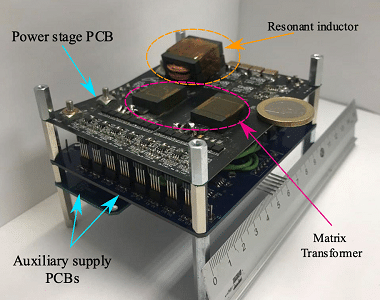GAIA Converter and Universidad Politecnica de Madrid have jointly developed a DC-DC converter specially design for More Electric Aircraft (MEA). The converter works with an efficiency of over 96% and delivers 1.5KW output at 28V. The converter provides a reduction in size, and weight while ensuring high levels of isolation required for the replacement of existing hydraulic and pneumatic systems with the electric solution. The product also meets the stringent MEA specifications while providing high power-density, narrow frequency variations along with a wide input voltage and output power range,.

According to the company, the DC-DC converters are critical to the ongoing transition toward More Electric Aircraft (MEA). The existing hydraulic and pneumatic systems are both bulky and require regular maintenance, therefore replacement with an electric solution requires Size, Weight, and Power (SWaP)-optimized converters. The GAIA Converter’s R&D team worked closely with Universidad Politecnica de Madrid to develop and implement a new automated design tool, based on an optimization algorithm. To meet the stringent MEA specifications, the team had to optimize the product dimensions, thermal conditions, and EMI standards, while taking design optimization to the next level. The project led to the creation of an optimized high-frequency (1MHz) resonant LLC converter prototype. The converter has an input voltage range from 220 V to 320 V and delivers 1.5KW output power at 28V output voltage. This converter achieves an efficiency of over 96% at full power with a power density of 32 kW/dm3, (half-brick package) and a narrow frequency variation range (15%).
Henri Huillet, CEO at GAIA Converter said, “At GAIA Converter we are always looking to innovate. Moving toward MEA is critical to developing more efficient aircraft and reducing emissions in line with the aerospace industry’s climate commitments. This project demonstrates how highly reliable and efficient integrated power conversion systems can be part of the solution and support the transition to MEA.”
This product paves the way for future innovation in power densification. by simplifying the design process for achieving highly efficient DC-DC converters capable of meeting MEA standards.






